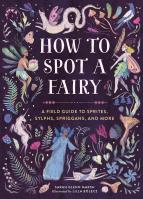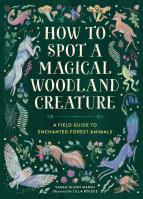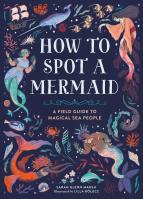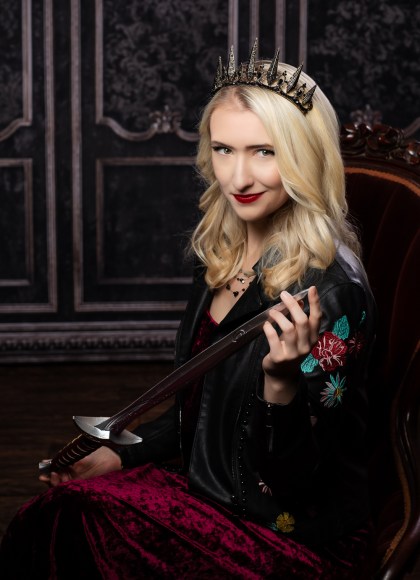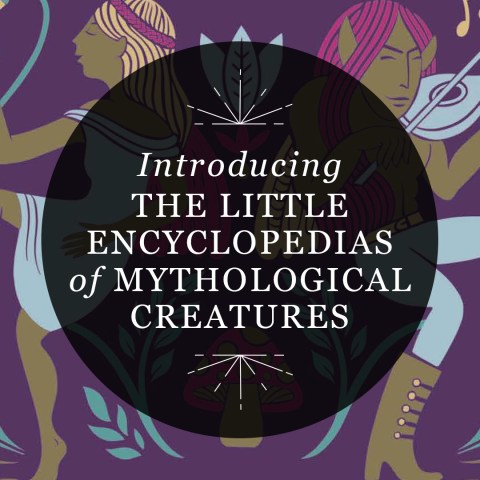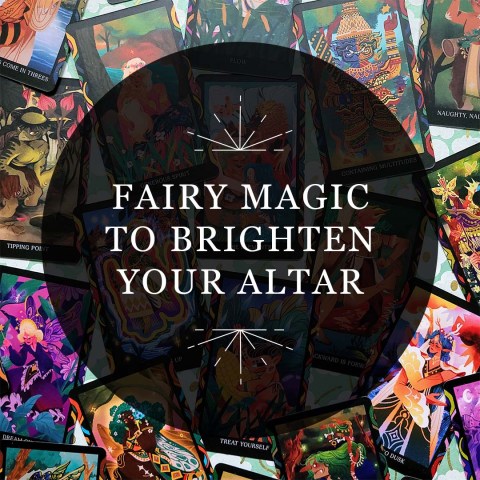Learn How to Spot a Fairy, Mermaid, or Magical Woodland Creature

Celebrate the art of noticing what is usually hidden with the How to Spot field guide series from Sarah Glenn Marsh, with enchanting illustrations from Lilla Bölecz.
These field guides offer advice to help you spot fairies, mermaids, and enchanted woodland creatures. From learning how to attract these beings with plants, herbs, and other natural objects to discovering creature profiles and engaging in kid-friendly crafts and activities, readers will discover the magic that awaits in our natural world.
Read on for adapted excerpts of each field guide.
Reminder: Activities and ventures into nature should always be supervised by an adult.
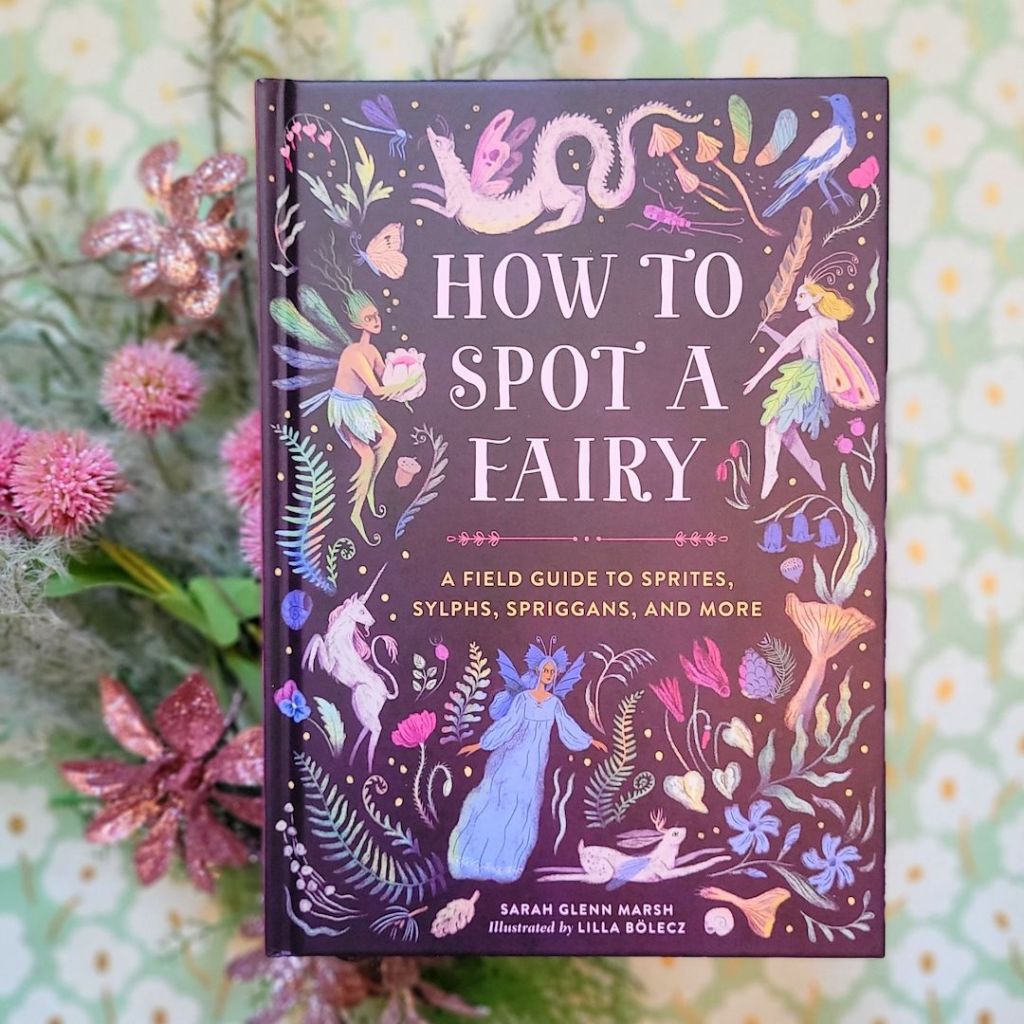
Spot a Fairy
“Fairies are like the spirit of nature itself, wild and free and changing like the seasons.”
In How to Spot a Fairy: A Field Guide to Sprites, Sylphs, Spriggans, and More, you’ll learn about all of the different types of fairies, the plants and flowers that affect them, and enjoy interactive quizzes and crafts that bring you closer to the fairy realm.
An Herbarium of Fairy Flora
The Herbarium is your guide to plants that are significant to fairies, whether to draw them near or drive them away. The Herbarium is especially helpful when you’re out in the woods and hoping to either have a magical encounter or avoid one!
To Attract:
Oak Trees: Full of things for garden fairies to eat
Thyme: Fairies love the scent
Sunflowers: A favorite snack of many fairies
To Repel:
Rowan Sprigs: Protect against bad intentions
Saint-John’s Wort: Guards people and livestock
Primroses: Over windowsills and doorways deny them entry
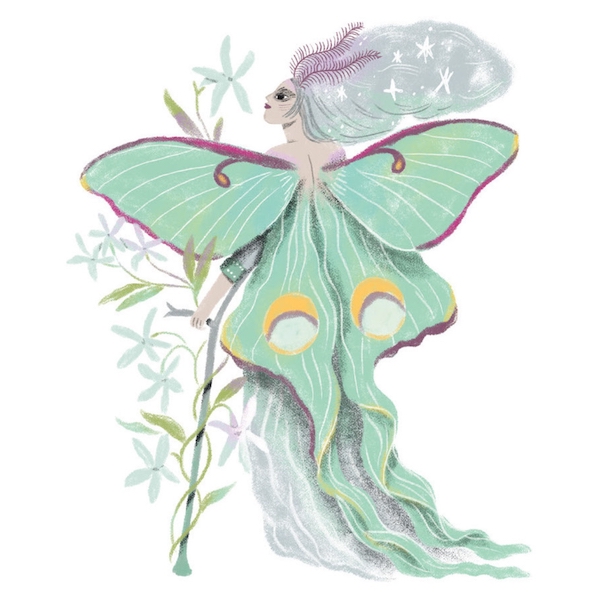
Creature Feature: Moon Maids
In How to Spot a Fairy, you’ll find a thorough guide to every known fairy. Here, we’re highlighting the Moon Maid:
OTHER NAMES: Celestials, Lunar Ladies
LIKES: Starlight, open meadows, nocturnal creatures
DISLIKES: Artificial light, storms
DIET: Omnivore—insects, mice, night-blooming flowers
ALIGNMENT: Solitary
Not to be confused with false fireflies, these luminous ladies are only visible at night in our world, where they often glow as gently as the moon but can shine as bright as the stars when they feel especially happy.
Though it’s believed that their glow comes from the moonlight each of them carries within themselves, the name “Moon Maid” actually comes from the position in which they rest during the day, which resembles a luna moth. At night, they unfurl their wings, standing no more than 2 inches tall.
Their white-gold or silvery hair sparkles with starlight, drawing in any nearby nocturnal creatures to witness their magical presence as they cup moonlight in their hands and bathe in it, drink from it, and scatter it over any night-blooming flowers they can find.
Despite having wings, Moon Maidens prefer dancing wherever they go. When they do fly, they tend to float on their mothlike wings, letting the winds carry them above the clouds and close to the moon.

Make a Fairy House
“Go away with the fairies and you might not find your way back, but you just might find yourself instead.”
Bring a little fairy magic into your daily life with this magical activity.
House and garden fairies always feel especially welcome when they find a little home just for them already waiting in your room, out in your yard, or on your windowsill or balcony. Making a fairy house is a great way to invite a friendly, curious fairy into your life, and just like the house you design will be unique, eventually the right visitor will come along who feels your fairy house is the special place of their dreams.
Materials Needed
- Base: A mason jar, flowerpot, birdhouse, or candleholder will do the trick.
- Paints: If your fairy house will be outdoors, choose paints that will stand up to the elements.
- Decorations: Choose what speaks to you! Some ideas include small artificial flowers, twigs, moss, pebbles, little artificial plants, crystals, sparkly beads, tiny furniture from a craft store, little pine cones, small seashells
- Glue and paintbrushes
Directions
- Decide on a base for your fairy house. Just remember to keep it small, as fairies aren’t drawn to large, drafty spaces.
- Decorate your way! You can’t go wrong—some fairy is bound to love your style. Paint your roof and walls if you like (fairies love a roof that reminds them of a mushroom) or color the floor. Glue bits of moss to the sides of your fairy house, or perhaps make a soft carpet of moss next to a fairy’s bed. You might want to build a place where magical visitors only stop in for the day; if so, add a tiny bench or chair, some beautiful crystals or seashells, and a plant or two, and you’ve got a comfortable spot for a fairy to rest on their way to their next destination. Pop some flowers onto your fairy house, and maybe add a pebbled path around the outside. Just don’t forget to paint on a door somewhere, or they won’t know they’re supposed to enter!
- Once all the glue and paint have dried and your fairy house is ready, reread the sections on house fairies and garden fairies to see who you’d like to attract, then plan where to display your fairy house accordingly. A windowsill is a great place to catch their eye from indoors, while in the grass or on a patio works nicely outside.
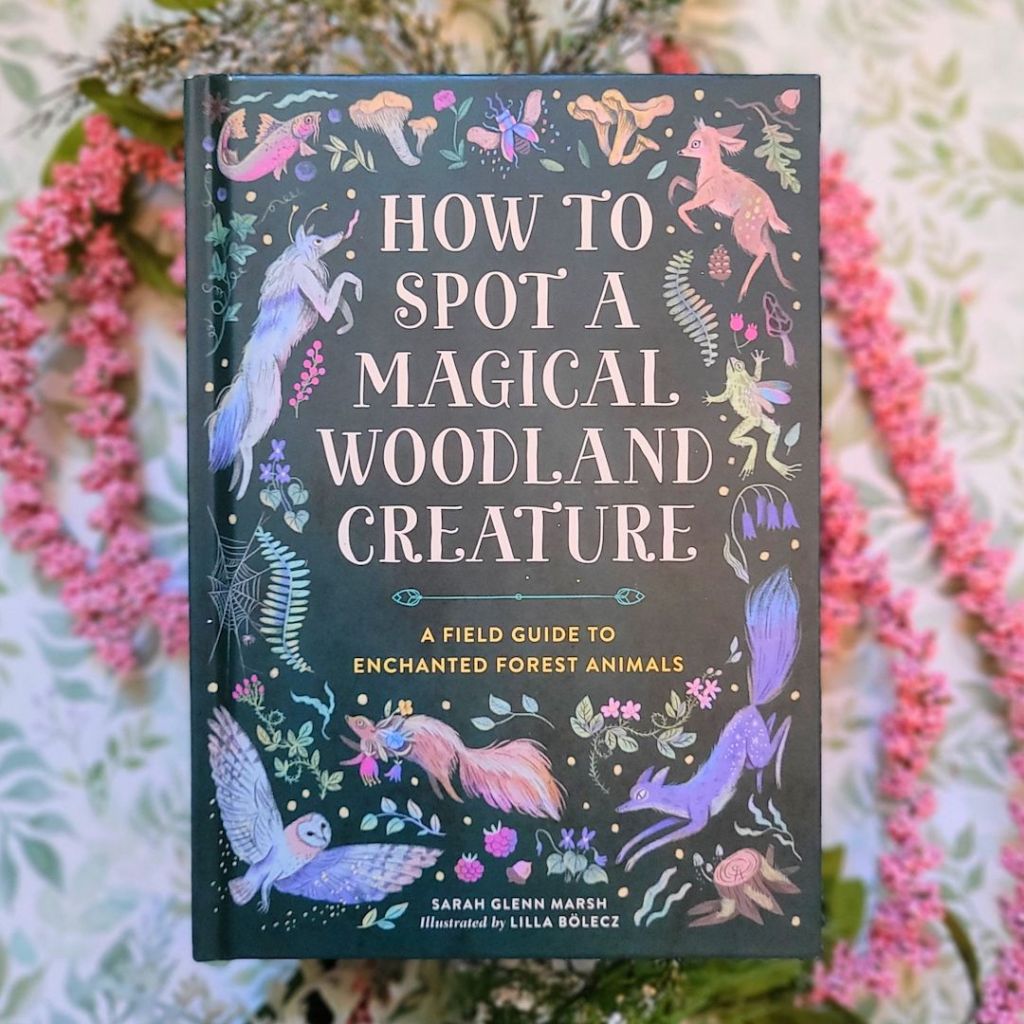
Spot a Magical Woodland Creature
“There are pockets of enchanted woods all around us, hidden among the ordinary; you could be out for a hike on a familiar trail, for instance, and realize that if you follow a strange path or make your own, you’re suddenly in an area where magical creatures live right here on Earth, quietly existing alongside us.”
How to Spot a Magical Woodland Creature: A Field Guide to Enchanted Forest Animals provides a thorough compendium of magical animals for noticing and safely interacting with them in the woods.
A Magical Herbarium
Whether they provide shelter, food, or simply care, many flora, fungi, trees, and herbs have a special significance to magical woodland creatures. Here are a few:
Flora
Bramble: Provides delicious berries for most of the wood’s herbivores
Common Dog Violet: Often gets the attention of enchanted butterflies
Fungi
Chanterelle: Enchanted deer love to eat these
Oyster Mushroom: Provides shelter during rain for smaller inhabitants of the wood
Trees
Birch: Enchanted woodpeckers bond with this tree
Elm: The leaves of this tree are most often eaten by enchanted moose
Herbs
Lemongrass: This herb helps magical creatures relax
Star Anise: This potent herb increases certain creatures’ magic when eaten

Creature Feature: Hedgehogs
In How to Spot a Magical Woodland Creature, discover magic hidden in sight by combing through the extensive guide of known enchanted woodland creatures, including mammals, reptiles, amphibians, birds, fish, and arthropods. Here, we’re highlighting the Hedgehog:
SCIENTIFIC NAME: Erinaceidae enchanta
HABITAT/RANGE: Forest floor, meadows, along streams
DIET: Omnivore, love mosquitoes
SIZE: Small, about 8 inches long
ACTIVE TIME: Nocturnal
Instead of the brown fur found on the common hedgehog, enchanted hedgehogs come in a variety of pastel colors. In the early evening, you may spot this nocturnal creature emerging from sleep beside a stream or lake to feast on mosquitoes.
Being rather shy by nature, they often decorate their quills with twigs and plant matter to better blend in with their forest surroundings and avoid being discovered by people or other creatures.
Unlike the solitary life of a normal hedgehog, enchanted hedgehogs prefer to sleep and play with friends, especially under the light of the full moon.
According to researchers, if a magical hedgehog willingly gives you one of their quills, you’ll be protected from negative energies and ill will as long as you carry it with you.
Just remember: never take one of their quills without it being offered to you, even if it’s lying on the ground!
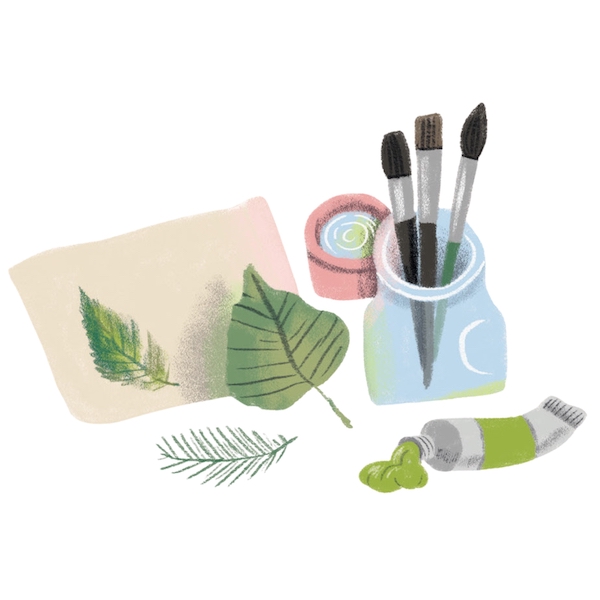
Leaf Printing 101
While it is best practice to leave most of what you find in the woods—even things that are on the ground might be used by certain animals as materials for a home or a nest—collecting some fallen leaves from animals’ favorite trees like birch, elm, and yew can be a terrific way to remember your magical time out in the wild. Here is a way to take the leaves you collect on your adventures and turn them into something as bright and magical as the creatures themselves.
Materials Needed
- Real fallen leaves, fresh or dry
- Outdoor workspace or newspapers to put down (This can get messy!)
- Paper, fabric, or canvas board
- A colorful assortment of paints (acrylic paint if using fabric; many types of paint will work on paper or canvas board)
- Paper plate or other paint palette
- Paintbrushes
Directions
- To find your leaves, go into the woods and collect some! See if you can get a few from each of the magical creatures’ favorite trees as outlined in the Herbarium,
- Get your work area ready: either choose a safe area outside where an adult won’t mind some messy paint or lay down newspapers or a mat you can get paint on where you’ll be working. Make sure you have your canvas, paper, or piece of fabric ready and that it’s the size you want. Otherwise, ask an adult for help cutting it to the right size. Put the different colors of paint you’d like to use—the more, the better—on a paper plate.
- Paint a leaf! Choose your first leaf and flip it over so the underside is facing you. Cover it in the paint color of your choice.
- Place the leaf with the painted side down against your paper or fabric. Press down all over the leaf for several seconds to make sure the paint transfers onto your canvas or paper.
- Lift the leaf away to reveal your colorful print.
- Repeat steps 3-5 with as many different leaves as you can fit into your paper or canvas.
- Give the paint time to dry, then enjoy your reminder of the enchanted wood!
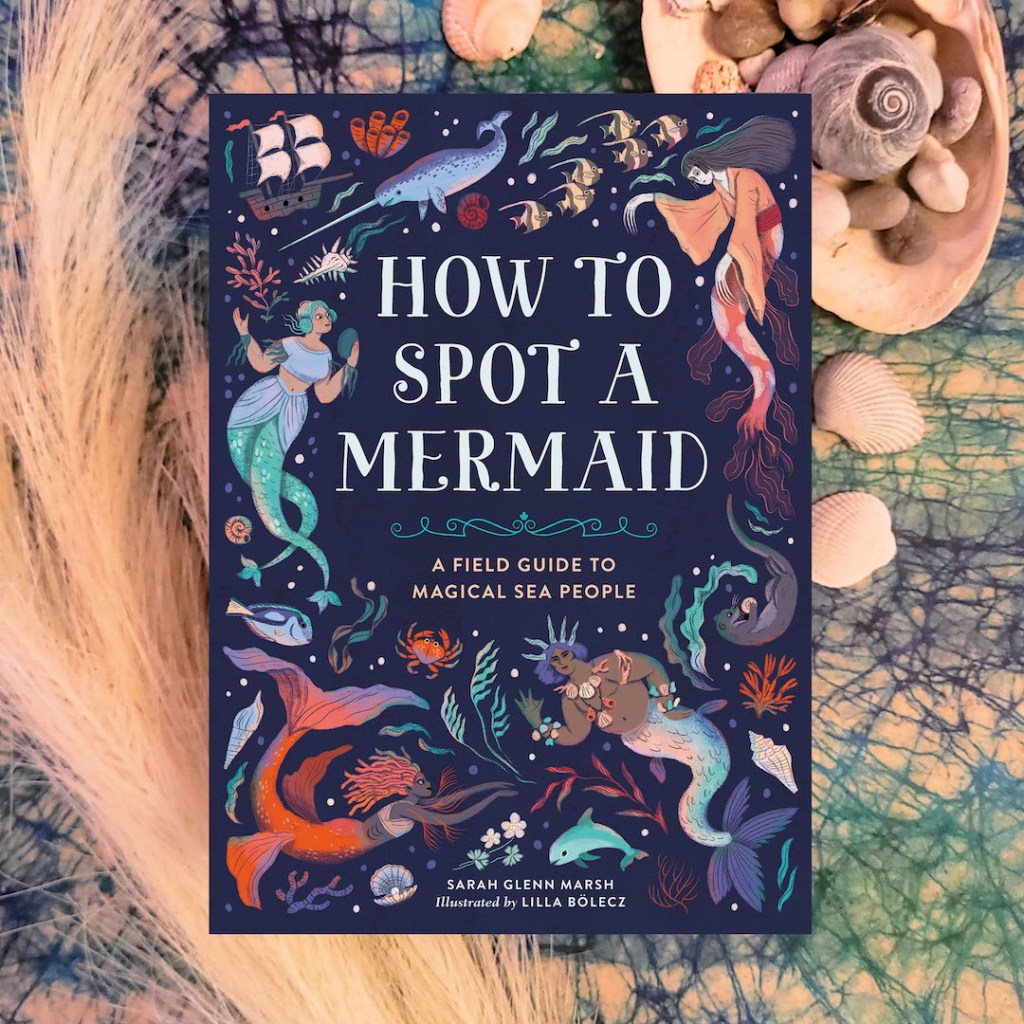
Spot a Mermaid
“Water is soft yet strong, restless yet patient, just like magic itself.”
Get swept away on an underwater adventure in How to Spot a Mermaid: A Field Guide to Magical Sea People. This field guide walks you through the mermaids and sea creatures living in bodies of water all over the world.
An Underwater Herbarium
Learn about the precious corals and plants used for food, medicine, decoration, or weaving into clothing.
Corals
Leaf Coral: Popular for decorating a mermaid’s sea cave home
Open Brain Coral: Mermaids brew this colorful coral into a tea that reduces pain and fever
Other Ocean Plants
Kelp: This soft greenery is a staple for weaving into clothing
Seagrass: These flowering plants are used for decoration and sometimes woven into blankets or small shelters for mermaids’ pets
Freshwater Plants
Cattails: A popular snack for some mermaids, and for others, a decoration found in their homes
Water Lettuce: A fibrous plant that is part of many mermaids’ diets; however, not many enjoy the taste
Water Lilies (Lily Pads): Some mermaids like to wear these flowers in their hair, while others make them into a tea that gives them an energy boost throughout the day.
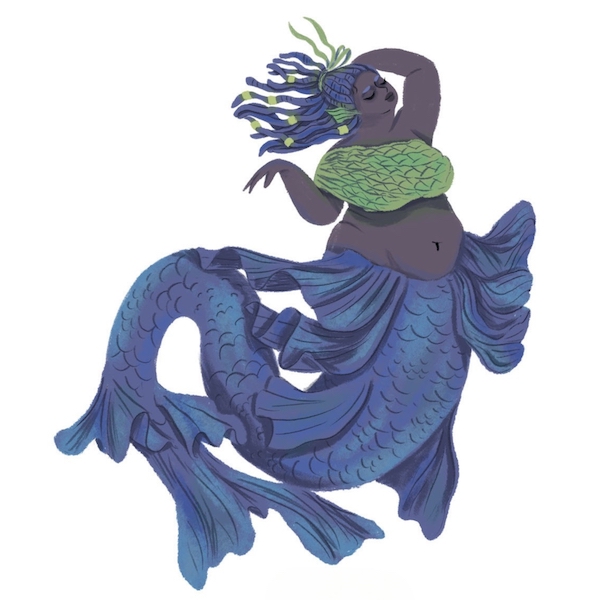
Creature Feature: Naiads
“The ocean is always singing for you if you just learn how to listen.”
Get inspired to spend more time near the water with How to Spot a Mermaid‘s thorough guide to every known mermaid, including Naiads.
Gentle, kind, and creative, Naiads dwell in rivers, springs, lakes, and ponds all over the world.
DIET: Herbivore—water lettuce, lilies, cattails, grasses and herbs
LIKES: Helping others, creativity
DISLIKES: Bad attitudes
FAVORITE MUSIC: Pop
When a naiad enchants a body of fresh water, the magic within can affect humans in several ways, all of them positive: taking a swim in the naiad’s water might provide inspiration to creative types, for instance, or cure cuts and bruises on someone’s skin if they’re injured.
To spot a Naiad, try reading poetry or playing pop music, since they always want to listen and dance!
Naiads typically have long flowing blue or green hair. Their long fins help them to dance gracefully in the water. Naiad clothing is often made of the rushes and grasses found around their homes.
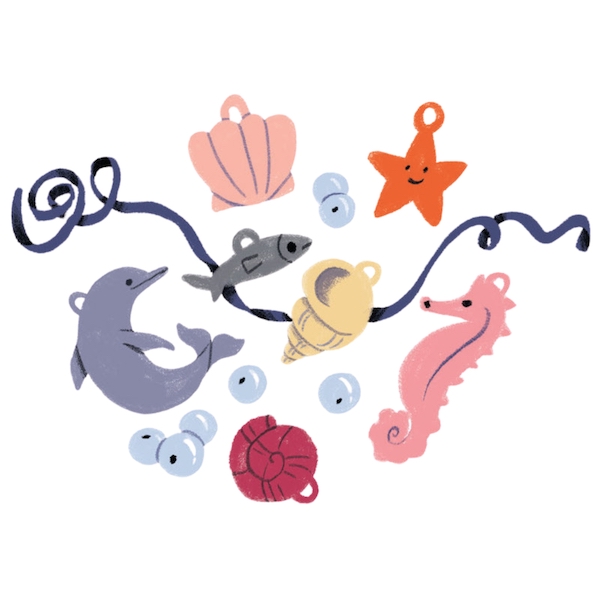
Design Your Own Mermaid Bracelet
You don’t have to live in the ocean to dress like a mermaid. Here are instructions for making bracelets inspired by fashions from under the sea! You’ll need to take a trip to the craft store with an adult for this one so that you can pick out your beads and materials. By choosing your own shells and other beads, you can really make this a symbol of everything you love about mermaids. These would also make great gifts for a friend.
Materials
- Assorted ribbon
- Plastic needle
- Clamshell beads
- Imitation pearl beads (a mermaid favorite; no oysters are harmed in getting these!)
- Other sea-themed beads (little starfish, dolphins, seashells, or even simple ocean-colored beads in blues and greens are all great choices)
- Plastic jewelry clasps
Directions
- Set out all your beads and materials in a clear work space, like a kitchen table.
- With adult supervision, using your wrist to measure, cut a length of ribbon that is much longer than what would be needed to wrap around your wrist (We’ll trim off any extra at the end!)
- Put your ribbon through the plastic needle.
- Slide a plastic jewelry clasp onto the ribbon using the needle.
- Tie a knot on the ribbon.
- Now you’re ready to slide on your beads in any pattern you like! You can place a few pearls on either side of a special bead, like a dolphin or seahorse, or make up another pattern that you have in mind. You can leave space that’s just ribbon in between beads by tying knots in the ribbon to secure each section of beads.
- Once you’re happy with the arrangement and have enough beads on your ribbon to make the bracelet you want, slide another jewelry clasp onto the ribbon using the needle.
- Tie a knot on the end of the ribbon again.
- Cut any extra ribbon off the end of your bracelet.
- Wear it often and think of the magical ocean!
Dive Deeper
Celebrate the art of noticing what is usually hidden with the How to Spot field guide series from Sarah Glenn Marsh, illustrated by Lilla Bolecz. Learn how to attract fairies, mermaids, and enchanted woodland creatures with plants, herbs, and other natural objects. Plus, explore creature profiles and kid-friendly activities.





